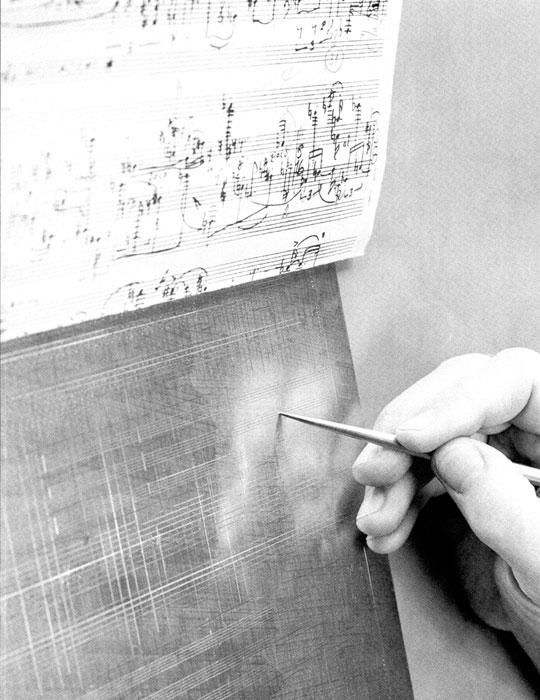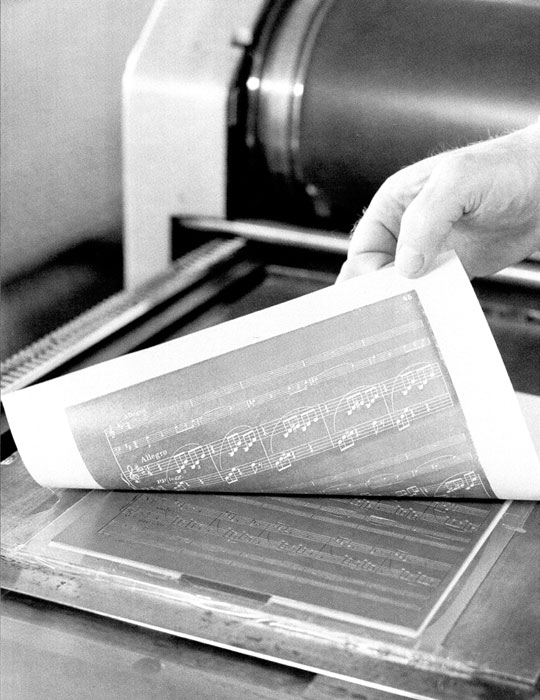About Music Engraving
Because moveable type was unable to duplicate many of the details of hand-written manuscripts, more elaborate methods of printing music were adopted. Engraving was the next technique used to print music.
The basic process of engraving was to plan out the lines, spaces, and layout on paper where the page turns are also determined.
Today music is set with music software, but some music publishing companies such as G. Henle Verlag continued to engrave music by hand until the year 2000.

The distance between the staves was planned. Planning depended on how high or low the notes were from the staves and on aesthetics. The staves were then etched into a flat, rectangular plate made of zinc, copper, or pewter with a five-pronged device called a rastral. (Using a rastral to make the staves.)

A steel nib was then used to write the music onto the plate in reverse. The spacing of the notes depended on their length. Half notes were spaced further apart while sixteenth notes were spaced closer together. (Using a steel nib to make the temporary musical symbols.)

Fixed symbols such as note heads and clefs were then hammered into the metal using special music punches and a hammer. (Punching a note onto the metal plate.)

Care was taken so that the notes would appear in mirror image so that printing would appear from left to right. Other symbols such as beams, stems, text, and long slurs were engraved by hand. As the engraver proceeded, the back of the plate was lightly hammered to reduce tension. Corrections were made by marking the back of the plate with calipers where the mistake was made in the front. The error was then hammered out, and the lines and music redrawn. Once finished, a rasp was used to remove any protruding pieces of metal and the plate was polished. (Creating a slur, free hand.)

When the plate was inked, the depressions would hold the ink. The engraving plates were then imprinted onto paper using a printing press. As technology progressed, the depressions were not filled with ink. Instead, the plate was inked so that the depressions would appear white on the paper. This was in effect a negative and was used to create a positive. (A negative of the finished metal plate.)
